Mutable Ecologies: Australia-Japan Foundation, Asialink and RMIT
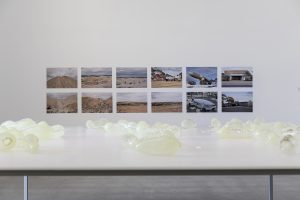
Hollowing Earth, 2017
Installation views at TarraWarra Museum of Art 2020
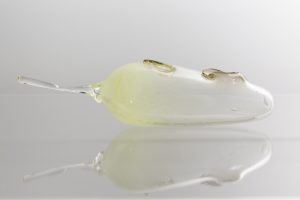
Hollowing Earth, 2017
Hand blown uranium enriched glass
Dimensions variable

Hollowing Earth, 2017
Hand blown uranium enriched glass
Dimensions variable
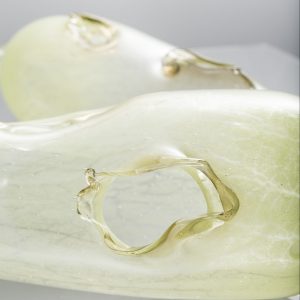
Hollowing Earth, 2017
Hand blown uranium enriched glass
Dimensions variable
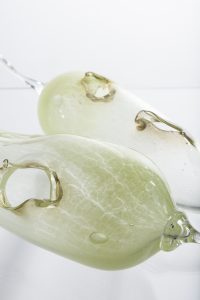
Hollowing Earth, 2017
Hand blown uranium enriched glass
Dimensions variable
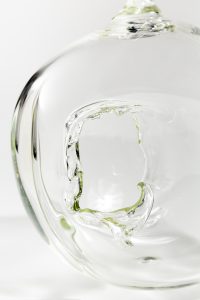
Nucleus, 2020
Hand blown glass bush plums
Approx 5x30x25cm eac
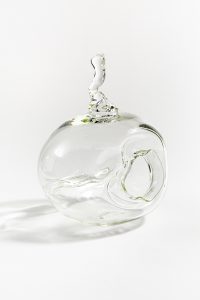
Nucleus, 2020
Approx 5x30x25cm each.
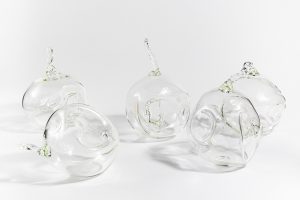
Nucleus, 2020
Hand blown glass bush plums
Approx 5x30x25cm each.
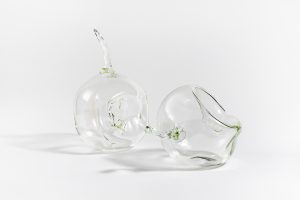
Nucleus, 2020
Hand blown glass bush plums
Approx 5x30x25cm each.

Nucleus, 2020
Hand blown glass bush plums
Approx 5x30x25cm each.
Yhonnie Scarce
16 Sep - 17 Dec 2021
2021 marks 10 years since the Tohoku earthquake and tsunami and 12 years since the Black Saturday bushfires. In this decade Australia and Japan have experienced an increase in extreme environmental events which have impacted our communities and cultures and opened up questions about the contributing factors of our human activities. Art and design practices offer us opportunities to unpack and better understand the interconnections between these social and environmental ecologies. Art in this sense is not an illustrative instrument nor a replacement for ‘hard science’. Rather it offers us poetic and affective experiences through which new perception and knowledge can emerge; this includes convergence with political action, new ways of feeling and being in the world and ways of practicing and translating identity and culture. T.J. Demos’ understanding of art’s critical role to society, culture and politics elevates it from being merely considered as a consumable resource or a functional tool. Instead, art is acknowledged to be a part of the world, a part of our human perception and a part of a re-imagining of interrelations.
Mutable Ecologies is a transnational project that considers how innovations in art are interrogating the effects of changing conditions to offer new insights and awareness of ecological futures. Leading creative practitioners from Australia and Japan will present their work and research through exhibition, performances and public discussions. This project foregrounds embodied and material perceptions of transformation—including the complicit involvement of creative practices in these transformations through activities, technologies and presentations.
Mutable Ecologies connects practitioners, publics and organisations to build networks and knowledge and strengthen existing partnerships. The project reveals the strong cultural relationship between Australia and Japan, including their shared values and commitment to community engagement and resilience and ecological and sustainable futures.
While anniversaries are moments to look back, they are also opportunities to look out and across histories, the recent past and the present. Contemporary media cycles tend to myopically focus public and political attention on the present, quickly moving on from events and obscuring histories as they focus on particular and often privileged perspectives. Contemporary art is not immune from the same magnetic pull of the ‘new’ and the ‘now’, drawn out of Modernist legacies. The impacts of environmental and human actions are ongoing and even if they occurred a decade, half-century or centuries ago they are still being experienced today. These impacts are particularly palpable for the communities who are returning to or who have been displaced from their homes and lands.
Using an art exhibition that remains largely inaccessible to visitors inside the Fukushima exclusion zone, Don’t Follow the Wind highlights some of these impacts and complexities, including the contradictions and controversies over how this zone is perceived and what it now means to residents, ex-residents and visitors. Hikaru Fujii’s work also explores this zone, focusing on the role of museums and conservators in acknowledging this event through their rescue, rehabilitation, and preservation of Fukushima Prefecture’s cultural heritage. The conversation that unfolds around the rescuing of artefacts and the significance of cultural memory reveals some of the nuanced interrelationships that exist between object, community, trauma and heritage.
While Japan is often spoken of as the only country to have experienced nuclear bombing as an official act of war, the testing of nuclear weapons has had a profound impact on the ecologies (social, cultural, material and political) of many First Nations Peoples, including Australia’s Aboriginal and Torres Strait islander peoples. Yhonnie Scarce’s work offers material, aesthetic and political references to the nuclear testing conducted by the British in Woomera, South Australia during the 1950s. The work makes visible the effects of this testing on the lands of Scarce’s family. This includes not only physical repercussions but also social and political ones—the alienation from country which was experienced due to the exclusion zone and the colonialist values underpinning Australian society which continues to impact Aboriginal land and people.
Supporting the exhibition program is a suite of live events and discussions focusing on woodland habitats, cold-climate science and communication, new explorations into atmospheres and microclimates, and the repurposing of food into performable hybrid instruments.
The works in this project have not been made to fix a problem, nor to simplify a situation, or memorialise a history. The problems they unpick are multilayered, the situations everchanging and the histories are still living. The aim of this project, instead, is to recognise and acknowledge the complexities—the relational nature, the felt experience and the often-traumatic humanness—of our everchanging interconnected world.
